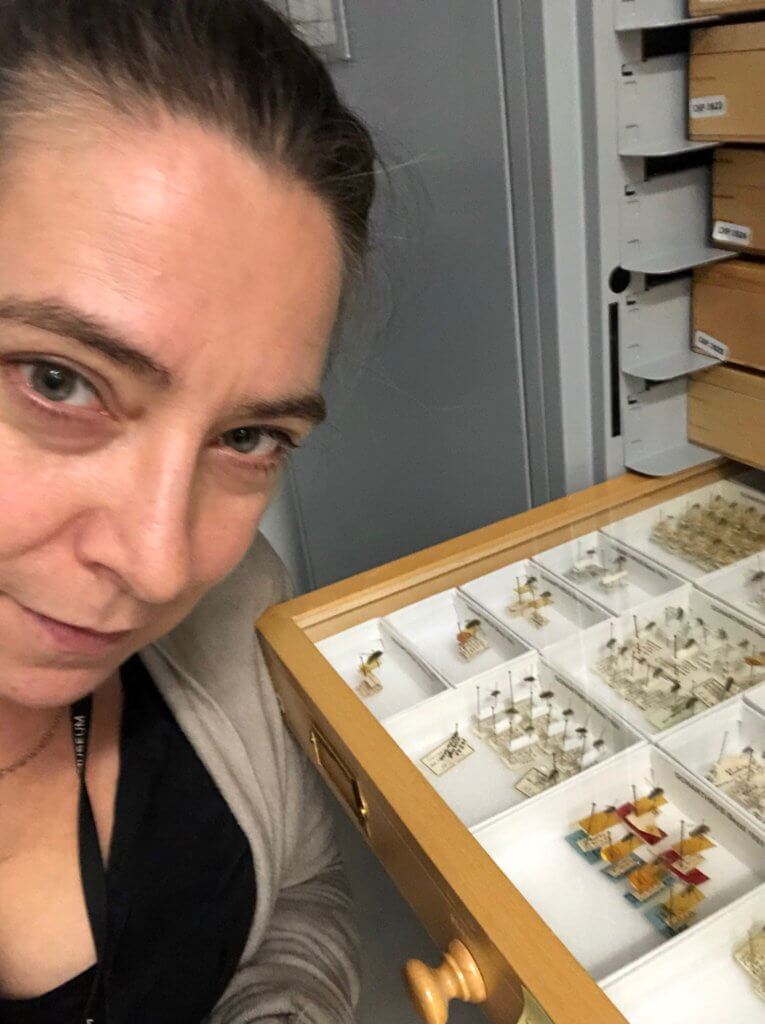
Dr Erica McAlister is the Senior Curator of Flies and Fleas at the Natural History Museum, London, where she works mostly with the larger Brachyceran flies (Robber Flies and Bee Flies) and Mosquitoes. She is on the Dipterists Forum Committee and the President of the Amateur Entomology Society and the author of The Secret Life of Flies. Twitter: @flygirlNHM
Many moons ago, when I was a keen first-year PhD student, the Head of the Department smirked at my research topic, referring to it as ‘a study of bird food’. She was not totally wrong, to be fair, as I was studying the macro-invertebrates community of a wetland habitat, but I remember being quite miffed that the most species-rich group of animals had been lumped together solely as ‘bird food’. Roll forward to today, and most of us still don’t appreciate the smaller beasts that roam our countryside. For a country that likes to think that it is a nation of animal lovers, it definitely has an odd way of showing it at times.
The animals that I love – the animals that stop me dead in my tracks to watch, the animals that make me grin at their crazy life histories – and the animals that most folks would kill without a second thought, are the flies. For most people, flies conjure up revulsion: images of pestilence, rotting bodies or spoilt food; bloodsucking mosquitoes invading our bedrooms … most would say nothing good can come of these creatures.
But I disagree, and I am not alone. Globally and nationally, research into these species has been progressing over the last couple of millennia, although one species has dominated the scientific collective. Drosophila melanogaster has been used as a model species for over a hundred years and has helped us understand genetics, behaviour and development biology to name but a few subjects. But flies aren’t just useful as ‘lab-rats’ or ‘bird food’. They are truly ubiquitous, and abundant in most habitats. Did you know that there are more species of fly in the UK than there are mammals on the planet? Think about the diversity of those mammals. Would it be right for us to say we must eradicate all mammals because one or two species (one in particular springs to mind) are a nuisance? And if we dig deep enough, even the flies that we see as a nuisance have hidden benefits. Those little bloodsuckers that we are hellbent on wiping out are often important pollinators (and, dare I say it, bird food).
So, to celebrate these maligned species, this year it has thus been decreed as the Year of the Fly. We would like people just to take some time and find out a little bit more about them. There are more than 7,000 described species in the UK, but we think we still have some more to discover. There are some very tricky families to identify that are under-described, whose identification too heavily relies on male genitalia – awkward when you only have females in your sample. But while the level of expertise, patience and equipment needed for identifying species like this may often be beyond the average nature enthusiast, you don’t need to be an expert to get to know this order as there are easier species to begin with.
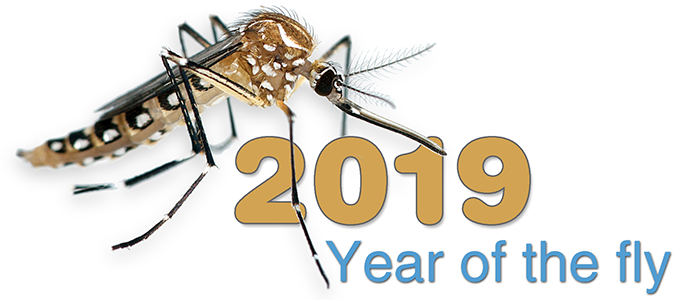
Yes, mosquitoes are indeed flies!
One of these “gateway” flies is the bee fly, of which there are four species in the genus Bombylius in the UK. These fluffy, flying narwhals, hairy all over and with long mouthparts, delight with not only their looks but also their amazing behaviour.
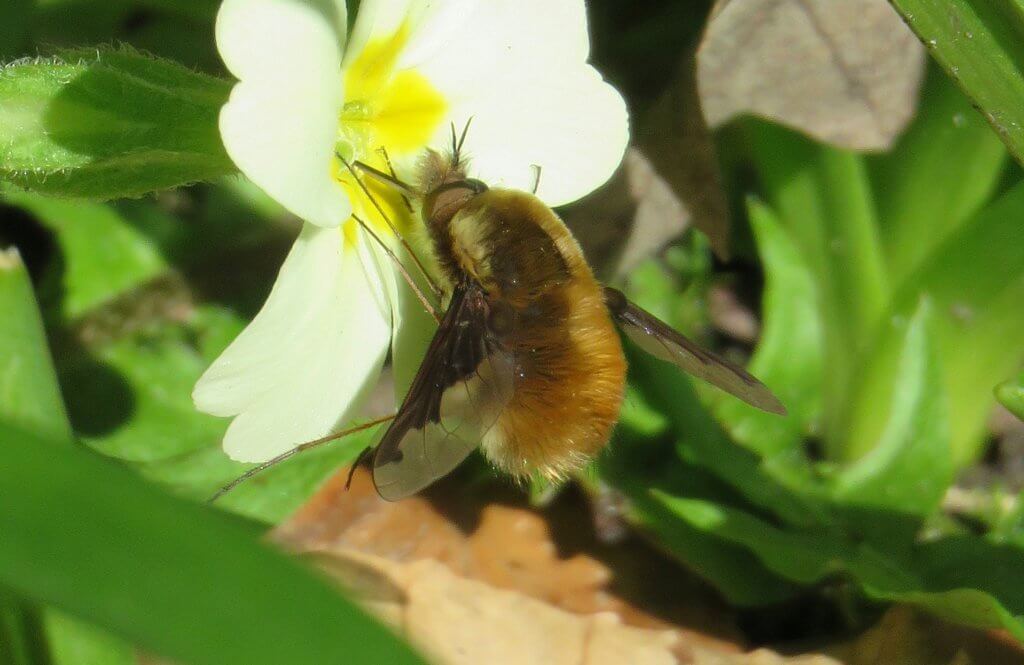
Bombylius major, the dark edged bee fly. Photo: Steve Falks
How could one not be intrigued by a mother who thinks nothing of hurling her eggs to the ground as a dispersal method? The eggs, once hatched, then undergo two distinct larval stages. The first is like a hyperactive toddler, which rapidly crawls about until it finds the ground nests of solitary bees. The second stage is like that of a teenager who hangs around his bedroom all day just eating – except these ‘teenagers’ sit next to a bee larvae and feasts upon them. Oh, don’t be appalled – nature is a fascinating and diverse thing, and these species have lived alongside each other for thousands of years – this battle is just one of the many being played out in your garden every day.
Another outrageous fly, and one I have only once seen alive in the UK, are the hunchback flies (Acroceridae), of which there are just three species found on these isles. The mothers seem even more irresponsible with their offspring than the bee fly, turning themselves into submachine guns and firing off thousands of eggs at a time. There need to be plenty of them, as the larvae have such a slim chance of finding and reaching their elusive hosts: these are spider killers. The larvae (with no legs, remember) must somehow reach and crawl up into the abdomen of one of the most active ground animals.
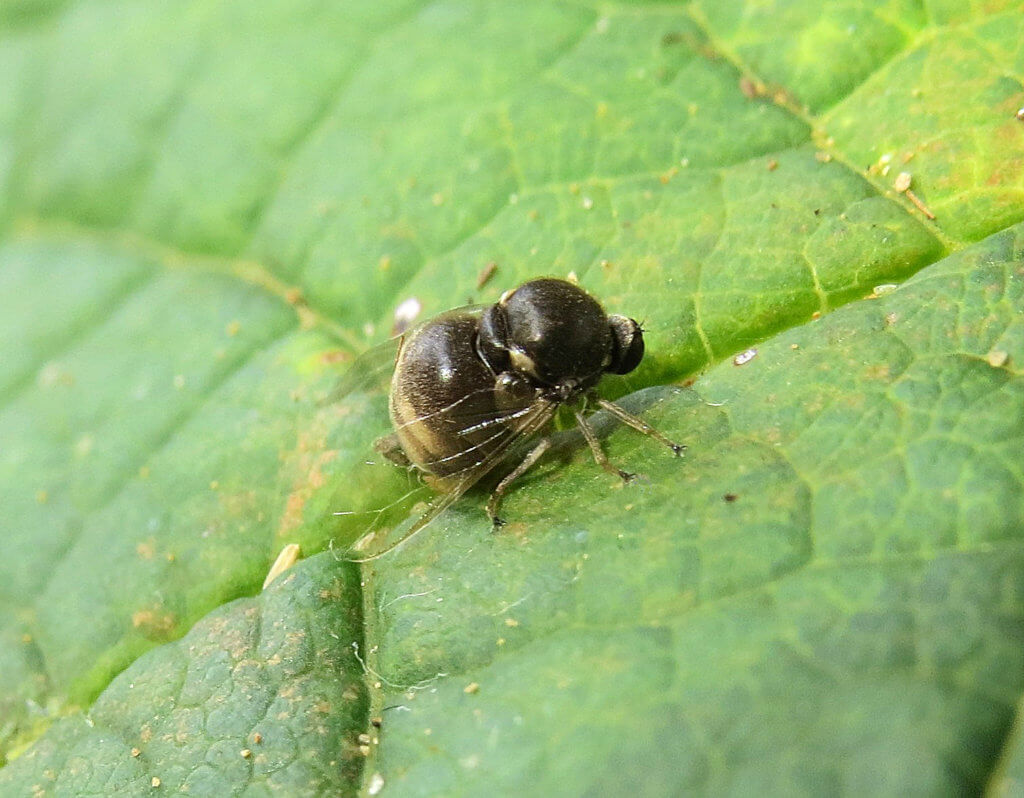
Paracrocera orbicular female. Photo: Steve Falks
Not all flies are parasitoids; many are scavengers – and very useful too. A recent immigrant to this country is the Black Soldier fly Hermatia illucens (fig. 4). Probably having escaped from a factory that breed these animals to feed to livestock, this species is rapidly spreading around the UK. This is not as bad as it sounds as this species may end up being one of the planet’s saviors. Jam-packed with omega-3 oils and protein, it is already being bred and fed to some of our livestock as an environmentally sustainable food source. Not only that, the larvae consume that livestock’s faeces: a lovely circle of sustainability.

Hermatia illucens, the black soldier fly (c)cc. Wikipedia
Go and study a fresh pile of dung yourself and you may see this species… but you may also see hirsute, bright-yellow creatures known as yellow dung flies. These are the males of the species and wait in anticipation to breed with the less hairy, greener females, who come to lay their eggs in the dung. These aren’t dung feeders but predators, and they are pretty badass. Many a Dipterist, happy with her day’s haul of flies, suddenly spots with anguish these beasts in her pooter (fly collecting aspirator) and can only watch on in horror as they feast on the rarest fly in the tube.
Indeed, there are many species of flies that are formidable predators, with a lot of them having the bonus of being venomous. One such family of truly great hunters are the robberflies. Take the hornet robberfly, Asilus crabroniformis; dressed in the classic black-and-yellow warning colours of the wasp, these are prolific predators, taking on beetles, wasps and even other robberflies. Although bringing death to many they are harmless to us – as are most species of fly, something that we should take time to remember. Yes, there are many species of fly, especially the mosquitoes, that are serious vectors of many diseases of medical importance. But within the family of mosquitoes of which there are 3500 species, only 150 of them are important vectors. The rest are not interested in humans, most feed on birds, and some of the females don’t blood feed. None of the males require a blood meal, instead they are nectar feeders, and now we are beginning to understand how big their role is in pollination.
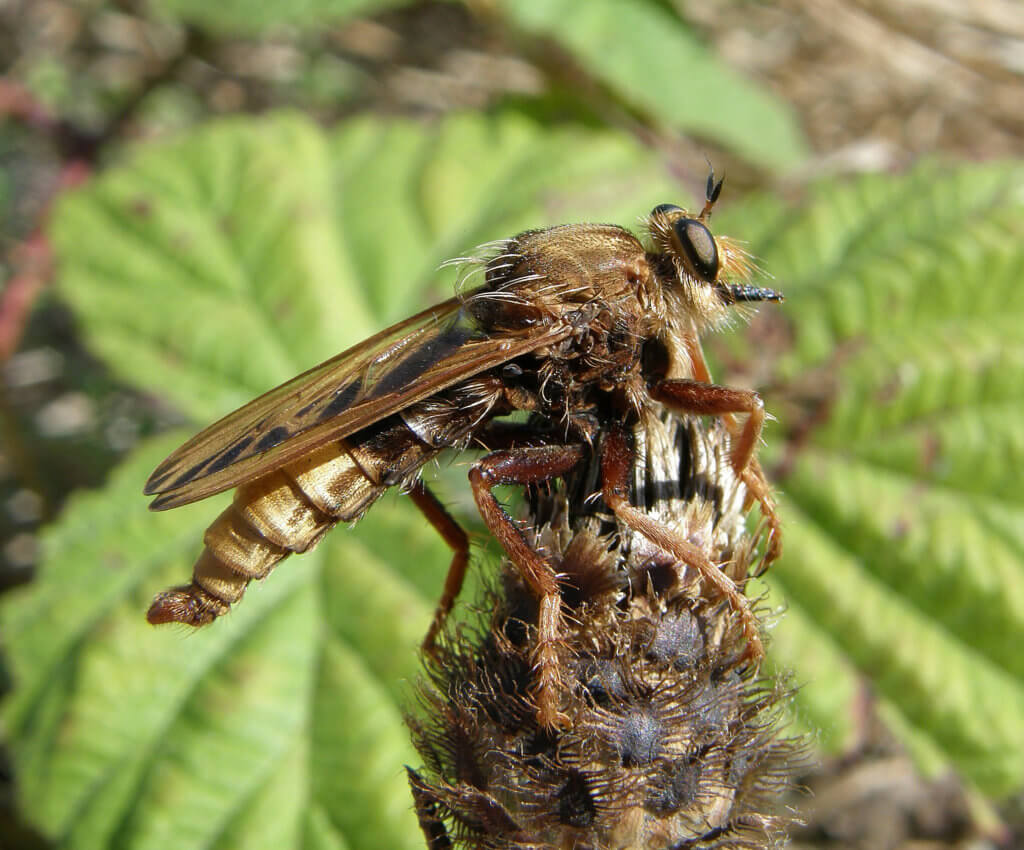
Asilus crabroniformis, the Hornet Robberfly. Photo: Steve Falks
Bees get much credit for being important pollinators, but there are myriad species of fly that are equally as important in this respect. Within the flies, it’s the Hoverflies that get most of the credit, and quite rightly so, as they do a marvelous job. They are some of the first flying insects out in spring, and some of the last to retire at the end of the year, and among the 280 or so species in the UK are some of the top pollinators. A notable among notables are Eristalis – a large species of hoverfly called the drone flies. Not only are the adults very effective pollinators, but the larvae are not idle either: unlike immature bees that rely on adults to feed them, the larvae of these species – known as rat-tailed maggots – are manure munchers. How can you dislike a species that from start to finish is maintaining and enhancing the environment?
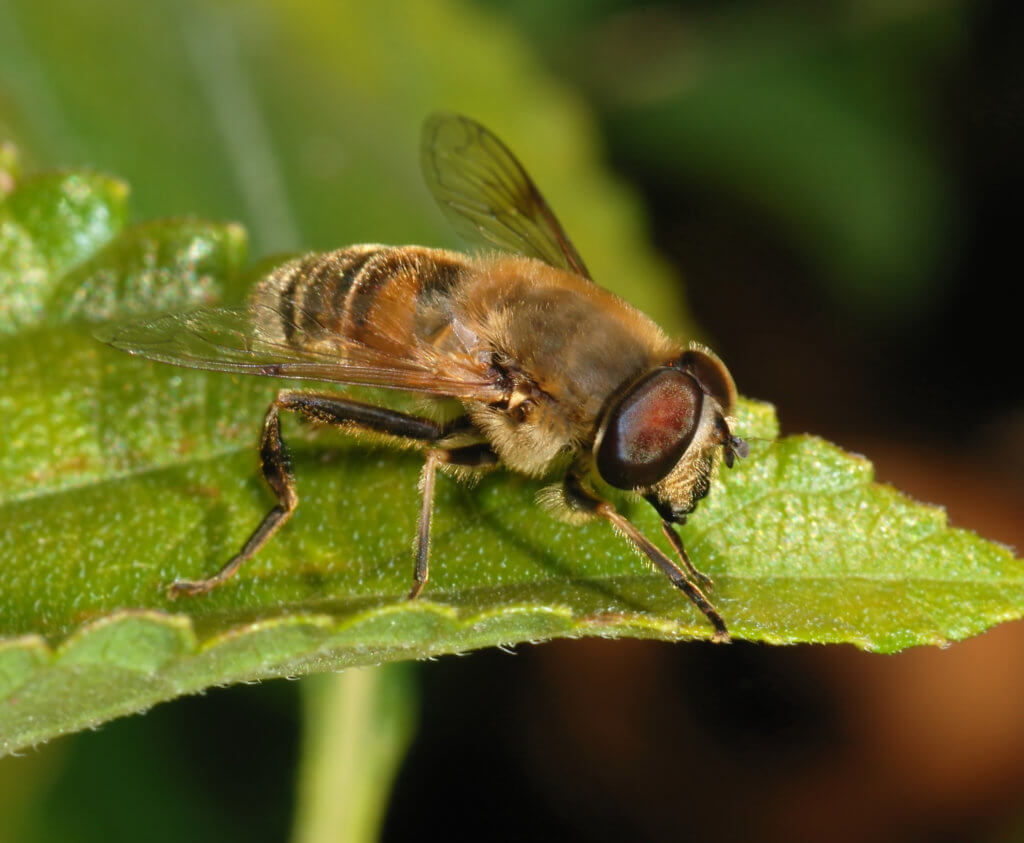
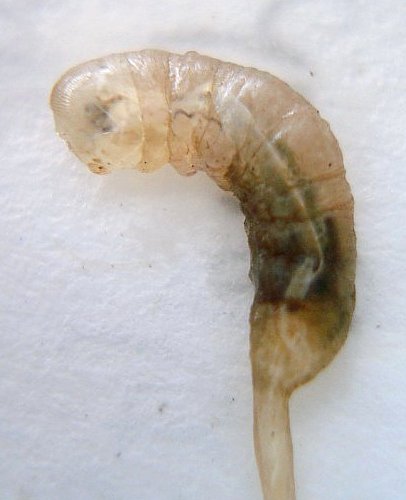
Eristalis tenax, adult and larvae. Photos: Steve Falks
Flies create a buzz in every part of this world we live in, and I, along with thousands of other Dipterists in the UK and abroad, love nothing more than finding out more about them. In the UK, we have the Dipterists Forum, a society dedicated towards all things fly, which runs identification workshops, recording schemes, field trips and more. Why not celebrate the Year of the Fly this year by joining?
Buglife, along with the Dipterists Forum, are doing a big push this year to encourage us all to record the adorable bee flies, which at this time of year are just beginning to emerge as adults. Please help us learn more about these, and all the other species of fly in the UK, as without them, life would be a lot more unpleasant. If not for us, do it for the birds.
[registration_form]
Excellent post! Bubbling with real enthusiasm and even in a short piece, informative and intriguing! Some of these species and groups are already on my benign study-radar, but it looks as if my horizons are about to widen a little more! Great stuff!
Great post! There is a huge mismatch between the ecological importance of flies (and other invertebrates) and the amount of attention they receive whether it be in terms of popular tv and media, scientific research or conservation. Having eloquent, expert advocates like Erica will help to tilt this imbalance back in the right direction I hope.
Great article by Erica. I thoroughly recommend her book.
And I also recommend checking out Steven Falk’s superb collection of photos: https://www.flickr.com/photos/63075200@N07/collections/72157629586945825/ of which a few illustrate this article.
And if you fancy contributing to our Dipteran knowledge, then join the UK Hoverfly Facebook page. Submit photos, even you Mark!, and if you don’t know the species, helpful individuals will ID them. By providing a grid reference, date and location (info on the website), you’ll help build up a picture of our 270 or so species of hoverflies. And some quite amazing science has been achieved through this Facebook page: checkout some of the posts by Roger Morris (one of the national recorders).
https://m.facebook.com/groups/609272232450940?ref=bookmarks
Thank you,a fascinating blog. I would suggest that your ‘genus’ of scientists are among the most important today. You are finding out how our planet really works, and species inter-react, and consequently, what we have to do to stop destroying it!
Love the idea of bee flies being fluffy flying narwhals.
Brilliant
I’m sure that I’m not alone in not being aware that this was the year of the fly. They are indeed truly worth of scientific research. My only study of flies, unfortunately, has been conducted over the 50 year that I have been driving. The huge drop in numbers of flies ending their lives on the windscreen of my cars has been very evident. To have a proper study I should have developed a standard car, windscreen, time of day, location etc. database which I neglected to do. However, anecdotally I can say with confidence that the number of flies of all species has dropped by approximately 80% over the time of my study. This is truly shocking, and wonder if there has been a scientific study which may suggest a more robust figure.
Great blog. Erica is my hero and one of the reasons I go around looking at flies.
Well Erica now joins you in my list of wildlife heroes.
Fascinating. Best blog here ever. You never mentioned ivermectin the chemical found in animal faeces which must have caused the demise of many insect species.
When i was young flies were classed as a pest to be destroyed because they walked over animal faeces and then over our food. Just now I have bought your book
Yes a great blog for sure!
Many years ago now, the RSPB had a neat project where you attached a cardboard grid to your car’s front bumper, drove around for so many miles and then counted the number of insects splattered on the grid.
It was a really innovative project. I wonder if the results are still buried somewhere at Sandy because a repeat of this now would be very illuminating…..if disheartening.
Erica is a fabulous fly ambassador. Her Twitter feed is well worth a follow. I shall be out there again this year trying to put dots on maps largely thanks to Erica’s enthusiasm.
Great blog. Particularly liked the thumbs up for the Black Soldier fly, a species that may well yet help to save our fish stocks. Ok, better explain that.
Around fifty percent of all fish caught in our seas are going not to feed us directly, but to be used as animal feed. That’s why your chicken can taste of fish. Now if you were a chicken, wouldn’t you rather eat a more natural diet of fly?
Just typing ‘Agriprotein’ into your search bar, should bring up a South African company who are leaders in this field.
Bacons the bloody same.
Fly bag traps my pet hate.
What species do they catch?
Yes, science has to show case the silent contribution from such not so big entities. Unfortunately, only that matters in size are getting noticed…just imagine the impact to nature if all these entities, like ants, flies , small plants disappear .. actually we don’t have any means or understanding to protect them ..we think that only crocodiles, big cats etc that mercilessly feed on others matter
I always enjoy your writing, Erica, and this is no exception (I keep offering to lend people my copy of The Secret Life of Flies, and they keep refusing to take it – I mean, really, how narrow-minded! I even tell them how readable it is).
I’ve been trying to do my bit for The Year of the Fly, in my fairly incompetent amateur dipterist way. I’ve done a couple of blogs already, and am halfway through another, this time on Calliphoridae – might be a bit of a challenge getting people to like blowflies, but I’m trying! You are my inspiration. 🙂